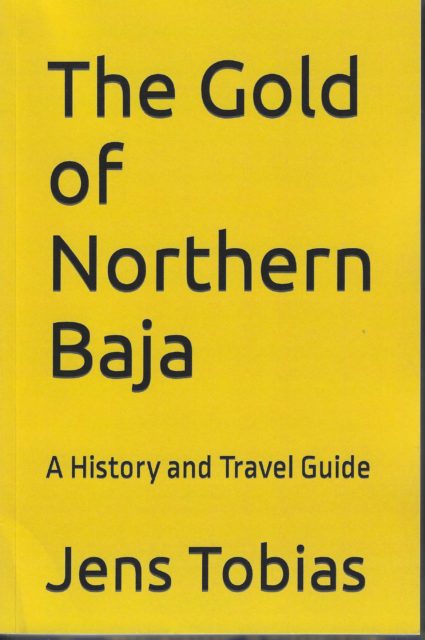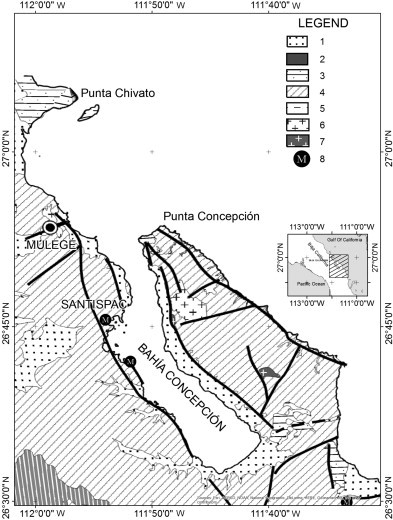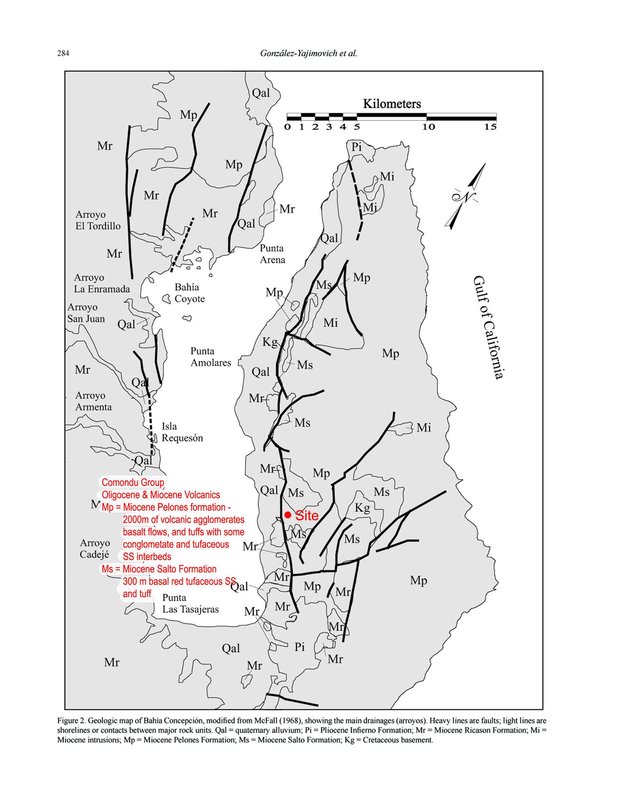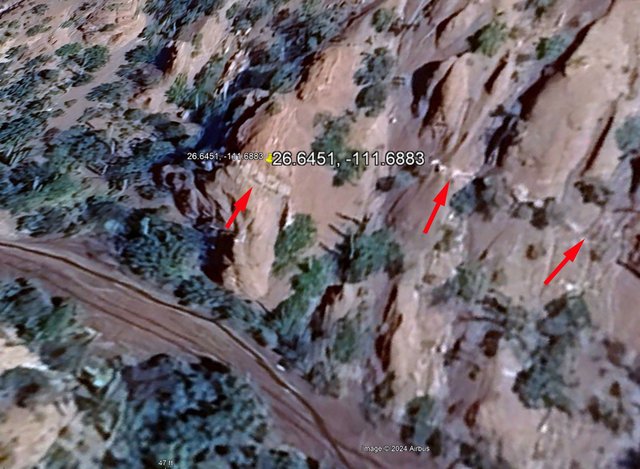Side canyon on the road out towards the manganese mine at the end of the Bahia Concepcion peninsula.
So, looking at that vein of white rock, it appears to be a "dike". Dikes are formed when a hot solution of minerals invades a fracture in the "host
rock" and then crystallizes into a new rock, forming a vein in the old rock.
"Pegmatite dikes" in eastern San Diego County and the Sierra Juarez are known to contain some exotic gemstones, including tourmaline, my favorite.
Some guys out in east county mucked out an old tourmaline mine a couple of decades back and after digging a little further into the old mine made a
big strike that yielded a huge payday in tourmaline gems.
What is weird is that this dyke appears to be in soft sedimentary material, not in a hard host rock. The only thing I can think of is that there is a
layer of host rock towards the bottom that decomposed, leaving the dike sticking up in the air, then a new layer of sediments was deposited around it.
Any geologists on here can explain what is going on here? |










 where's this?
where's this?









